Hawaiian Agriculture
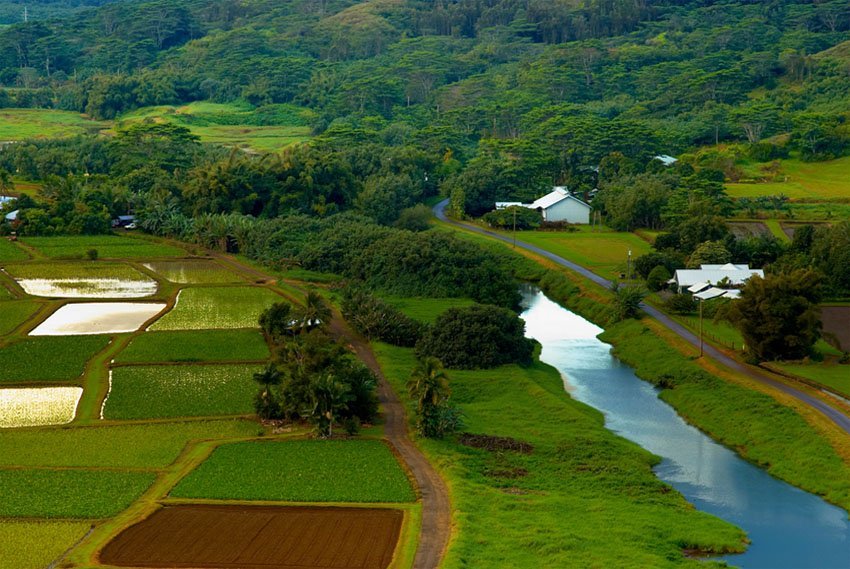
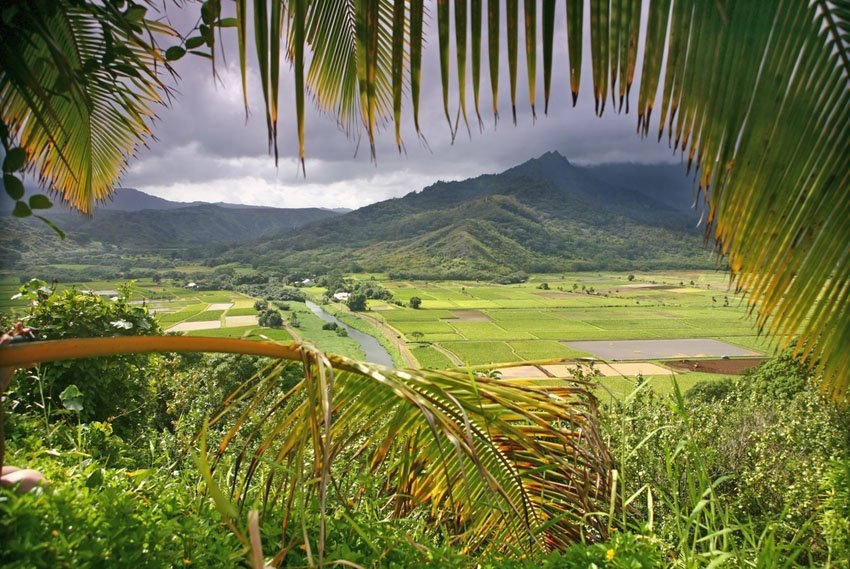
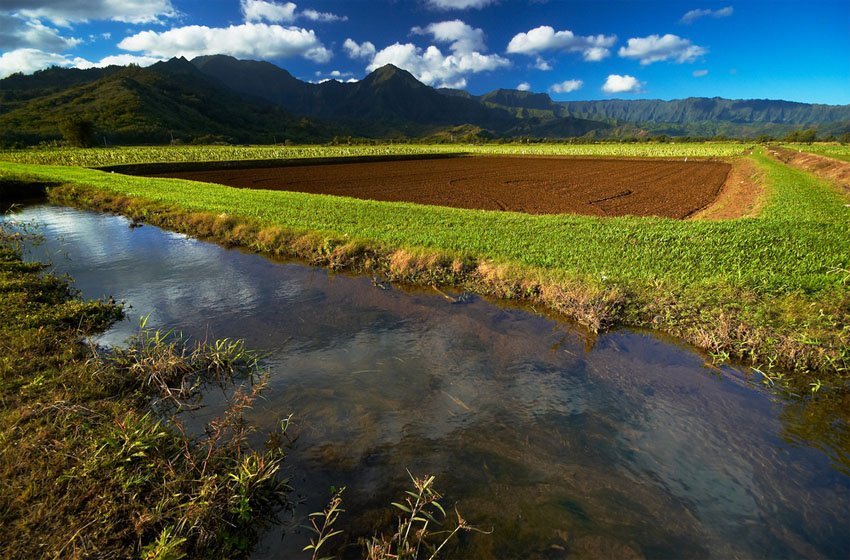
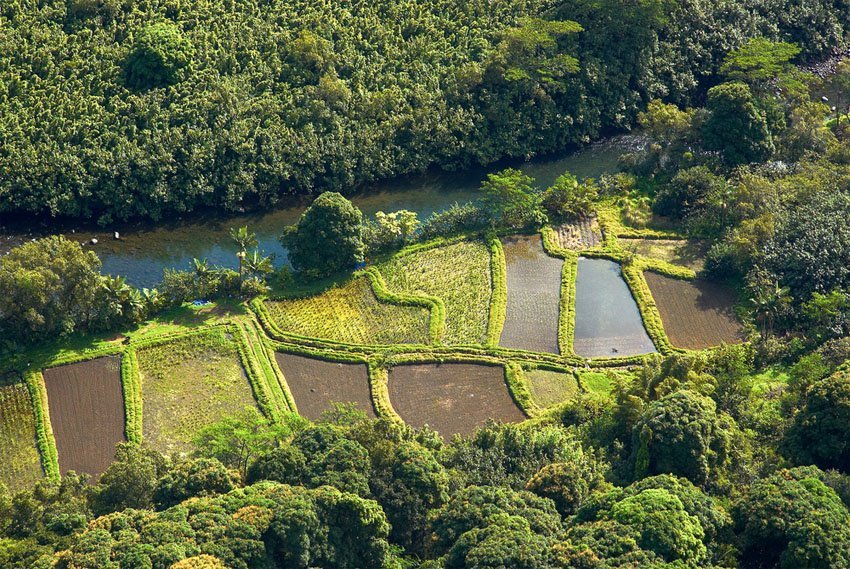
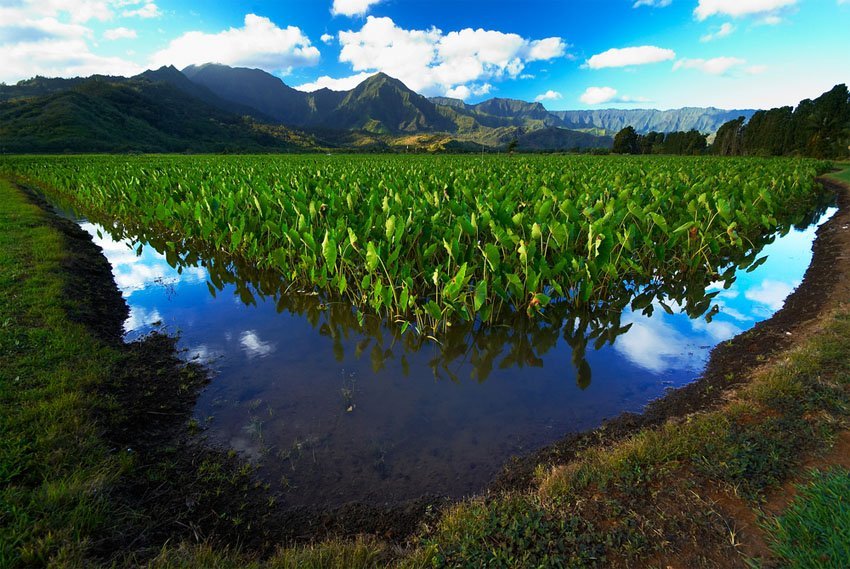
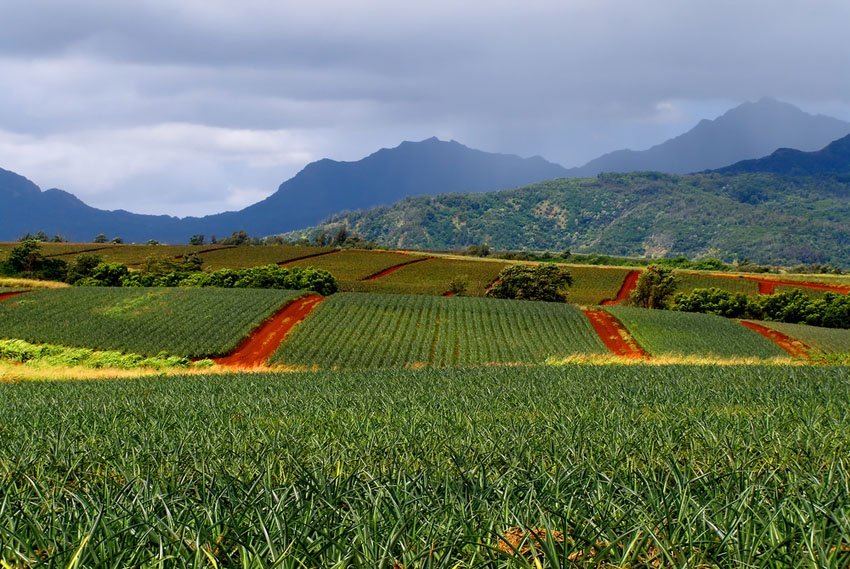
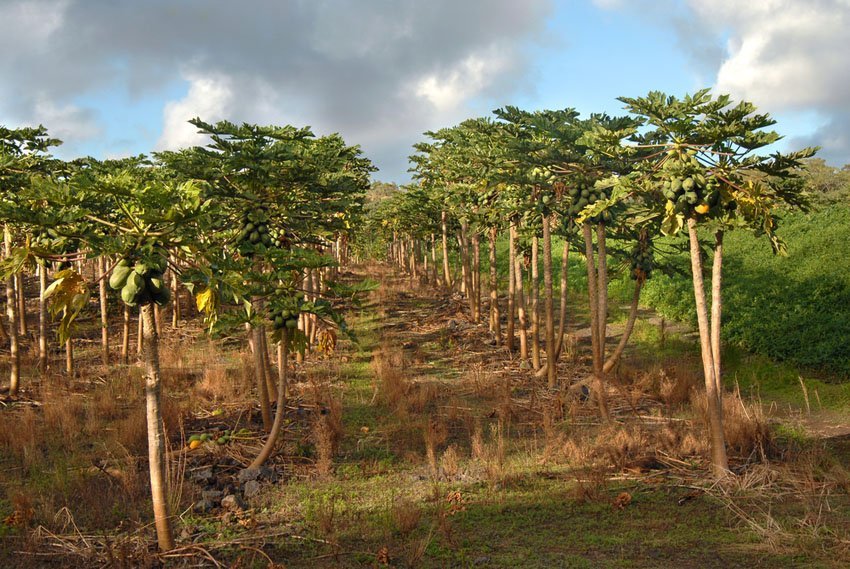
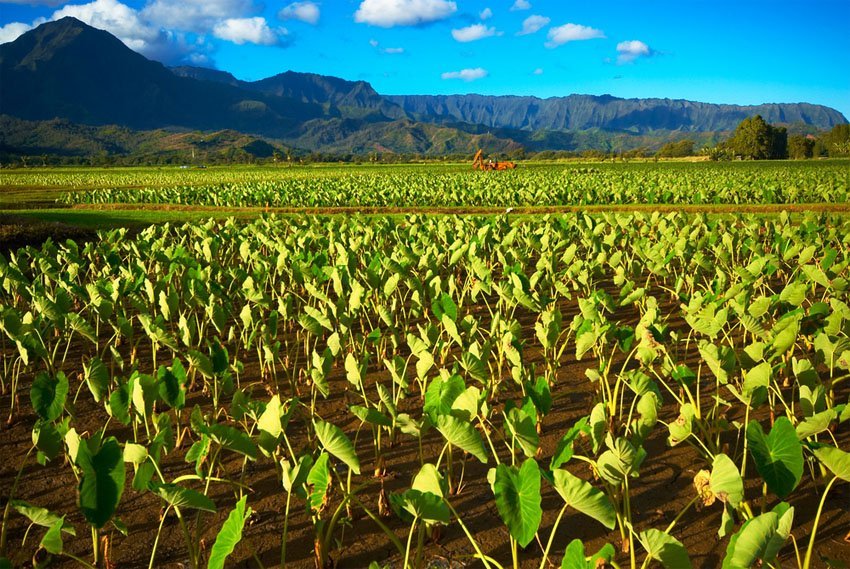
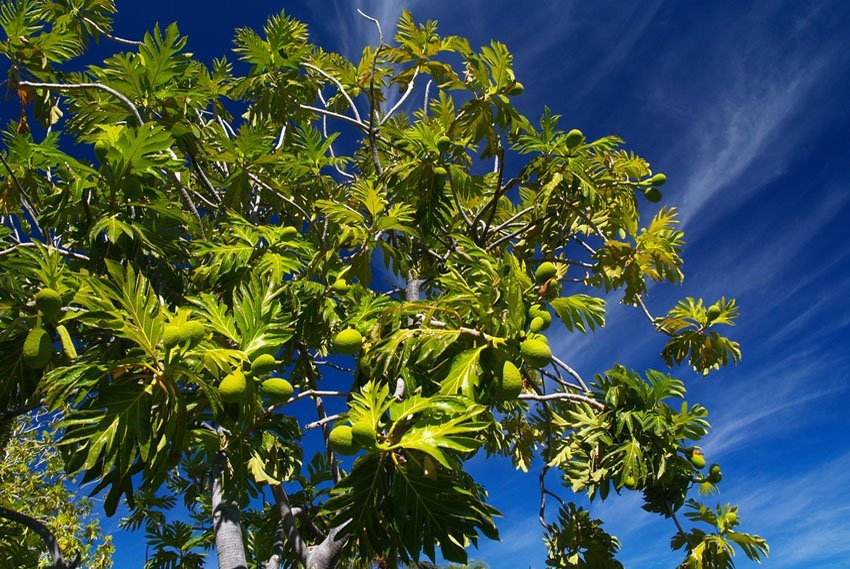
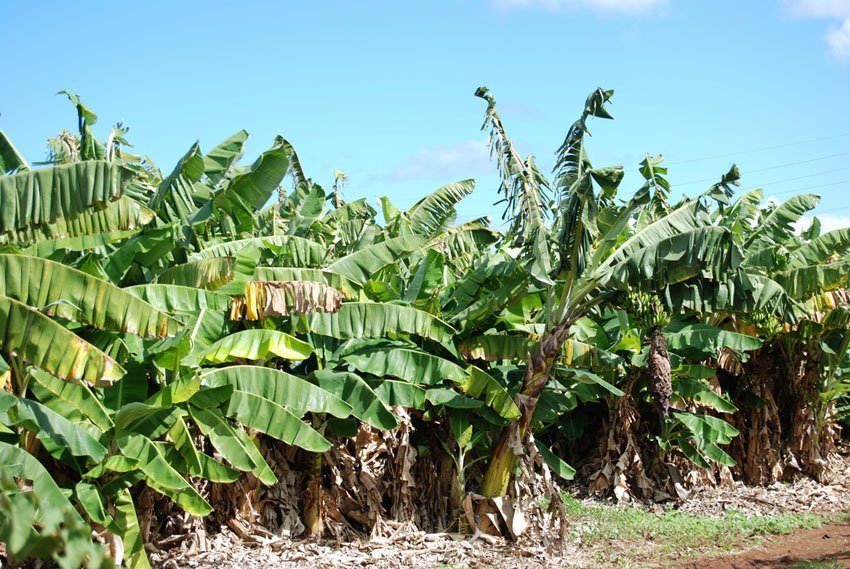
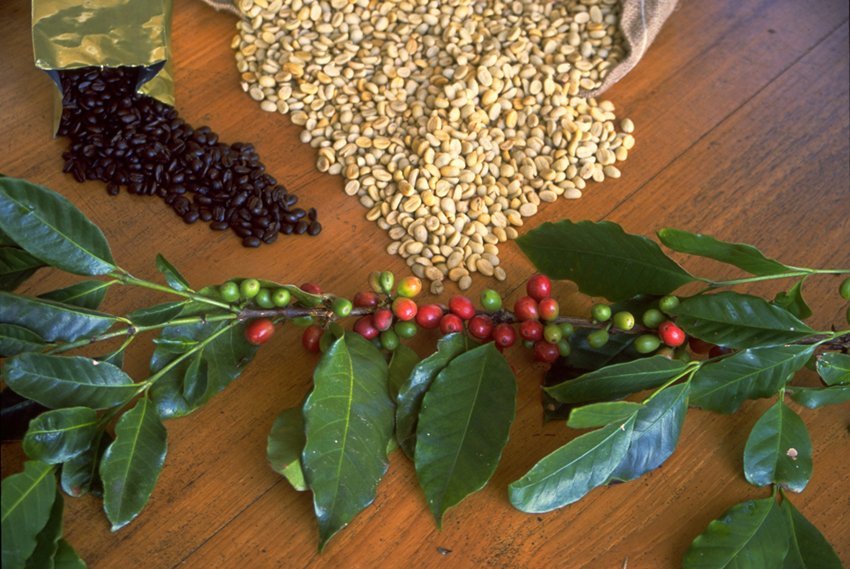
Many Diverse Crops
Thanks to Hawaii's mild, year-round climate, it is a fertile place that sustains many different types of agriculture. Approximately 40 percent of land on Hawaii is farmland. The state is home to approximately 3,600 crop farms and 1,100 livestock farms that include cattle, hogs, milk, eggs and honey. The average agriculture sales per year in Hawaii are around $357 million dollars.
When most people think about agriculture in Hawaii the crops that come to mind are sugarcane, pineapple, macadamia nuts and coffee. While these are very important crops for the islands, there are many other crops that help sustain Hawaii's economy. Among these many crops are ginger, banana, onions, sweet potato, lettuce and seed crops.
History
When the first Westerners came to the Hawaiian Islands in 1778, it was discovered that the Native Hawaiians had a wide array of food available. The islands had a good supply of pig, chicken, ginger, kawa, taro, ti, sugar, banana, coconut, sweet potato and breadfruit.
Between 1790 and 1870, sandalwood and later whaling were both major parts of Hawaii's agricultural industry. They are no longer part of Hawaii's agricultural industry, but both subjects are rich in history.
Over the next 100 years, the Westerners would bring in many other plants and animals that would become part of Hawaii's rich agricultural history.
Sugarcane
Sugarcane was thriving in Hawaii long before Captain Cook came to the islands in 1778. As early as 1802, people on Lanai were reportedly using stone rollers to crush the sweet juice from the sugarcane.
It wasn't until 1834 that the first sugar plantation went up on Kauai. Ladd & Company was granted the use of 980 acres from King Kamehameha III for growing and harvesting sugarcane.
Hawaii was the perfect climate for this crop. The industry boomed. By 1959, one out of every twelve people in the work force, was employed by the sugar industry.
Today, sugar is still being grown in Hawaii. Times have changed, though, and many processing mills have closed. Most of Hawaii's sugar is processed, packaged and marketed out of California.
Many tourists have mistaken the harvesting of sugarcane as a huge field fire. In Hawaii we call it "burning cane." When it's "burning cane" locals hope for the trade winds to pick up and sweep the smoke and ash from the islands. During this step of the harvesting, you will probably see small flecks of black ash covering various parts of the island.
Some people report that their allergies are worse when the cane is burning. If you have severe allergies or are asthmatic, discuss the possibility of a negative reaction with your doctor before traveling to areas where there is a large amount of cane to be harvested.
Macadamia Nuts
The macadamia nut tree was brought to Hawaii from Australia in 1882. For about forty years, they were raised as ornamental trees because of their beauty. It is now one of the most popular crops to come out of the Hawaiian Islands.
The first macadamia nut plantation was set up in 1921, but it wasn't until the 1950s that the crop actually became profitable. Today, Hawaii supplies 90 percent of the world's macadamia nuts through its 700 farms and eight processing plants.
You will find all types of macadamia nut products during your Hawaii vacation. The macadamia nut is very versatile. It tastes good roasted and salted, in candies, on fish and poultry and as an oil.
Pineapple
It is documented that pineapple was brought to the islands by King Kamehameha the First's Spanish advisor, Don Francisco de Paula y Marin in 1813. However, it is speculated that as early as 1527, pineapples may have come to the islands when a Spanish ship was wrecked off the South Kona coast of the Big Island. Many things washed ashore in this wreck - pineapple may have been one of those things. Pineapple quickly became one of the largest and most profitable crops on the islands after its 1813 introduction.
In 1898, Alfred W. Eames of California formed what would become Del Monte Fresh Produce. In 1901, James Drummond Dole formed Dole Hawaiian Pineapple Company. In 1909, Maui Land and Pineapple was formed. These three companies would become giants in the pineapple industry. By 1930, nine million cases of pineapple were exported out of Hawaii by eight different canneries. In the 1960s, Hawaii was responsible for 80 percent of the world's pineapple.
Today, pineapple is still grown in Hawaii, but times have changed. Hawaii is no longer a profitable place to grow and process pine - there are much cheaper places to do so. Currently, Hawaii produces only two percent of the world's pineapple.
Del Monte Fresh Produce has announced that in 2008, it will cease its pineapple production in Hawaii leaving only Maui Land and Pine and Dole to the industry.
Pineapple is the only fresh produce that you can take back to the continental United States via the airlines from Hawaii.
Coffee
The first coffee plant was introduced to Hawaii through King Kamehameha the First's Spanish advisor in 1813. In 1828, the first coffee tree was planted in Kona on the Big Island of Hawaii by a missionary. Thus, the exquisite taste of the coveted cup of Kona coffee had begun.
In the 1930s, coffee became a commercial crop in Hawaii. Today, there are 715 small coffee farms in the state. Hawaii is the sole U.S. provider of coffee in the world.
While on vacation, beware of buying coffee marked as "Kona Blends." Most of the time, you will only be getting 10 percent of Hawaii coffee in the bag. While true Kona coffee can be pricey, it really is a rare treat. Make sure to savor every sip.


























